history
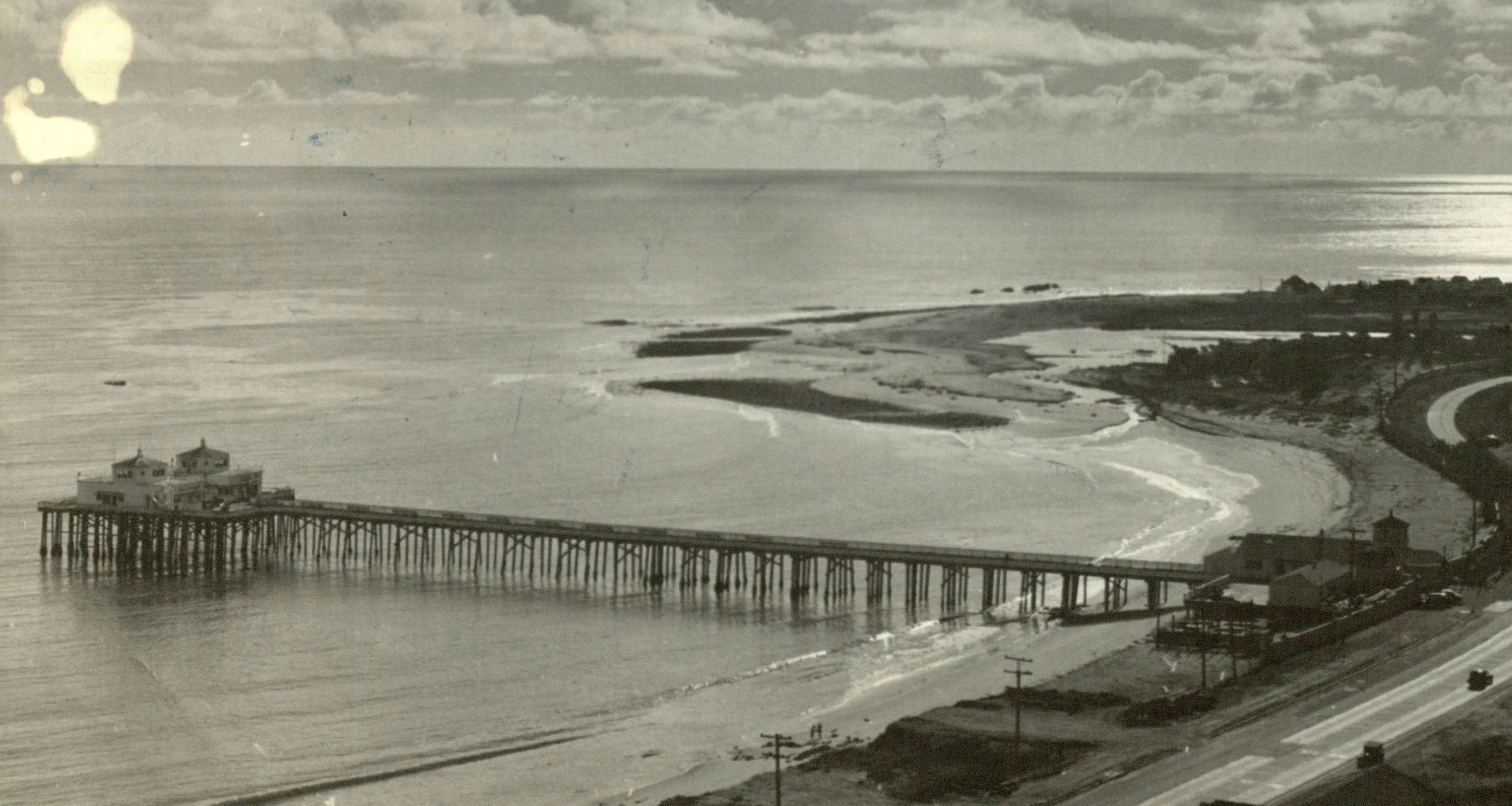
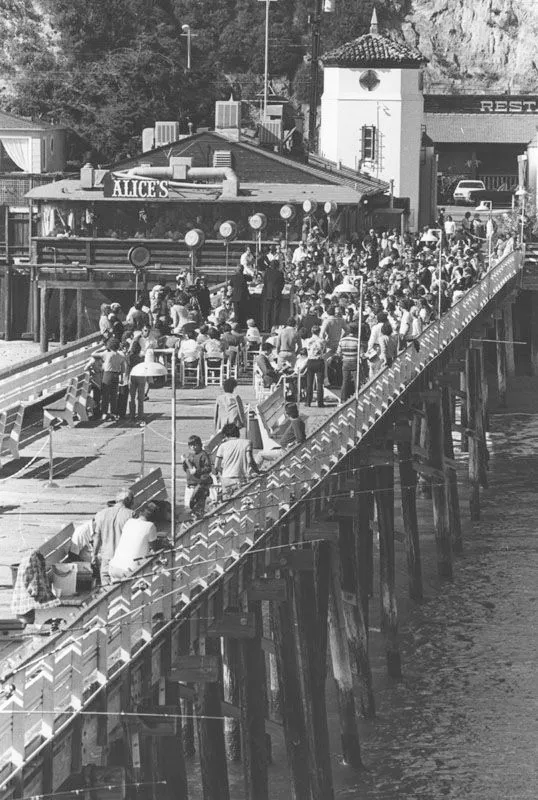
The malibu Pier
"The Malibu Pier is historically significant and one of the great piers of the State of California."
- John Foster, Senior State Archaeologist, California State Parks (Retired)
The Malibu Pier was originally built in 1905 to support the operations of Frederick Hastings Rindge's Malibu Rancho. Hides, grains, fruit, and other agricultural products were shipped from The Pier either directly or by transfer to larger vessels. Building materials and other Rancho necessities arrived at the Pier. The Rindge private railroad, used for freight movement within the ranch, had a terminus near the Pier.
The Adamson House, located just west of the Pier, included a wall built along the highway to the Pier in 1932. The entrance tower and storage room, at the entrance the Pier, is decorated with Malibu Potteries tile from the factory which was located just east of the Pier. The tower and part of the wall are still there.
In 1934, the Pier was opened to the public for pier and charter fishing. Fishermen were also shuttled back and forth from the pier and the barge Minnie A. Caine anchored a mile off shore. After the bankruptcy of Marblehead Land Co. (the Rindge's land operation) in 1936, the Malibu Pier was taken over by bondholders who had helped finance Malibu development. The Pier was extended to its current 780-foot length, and the first small bait and tackle shop building was constructed at the ocean end by 1938.
During World War II, the end of the Pier served as a U.S. Coast Guard daylight lookout station until an intense storm in the winter of 1943-1944. The end of the Pier, including the bait and tackle shop, was destroyed and had to be rebuilt. The remains of the Pier were sold to William Huber's Malibu Pier Company for $50,000 with the proviso that he would construct a building for the Coast Guard to re-occupy. After the end of the war, Huber expanded the Pier and built the familiar twin buildings at the end for a bait and tackle shop plus a restaurant.
In 1960, an artificial reef was constructed in the ocean about one mile southeast of the Pier in an attempt to protect it from ocean damage. The reef was composed of concrete pilings, derelict streetcars and other heavy materials.
Sports fishing boats operated from the Pier until the early 1960s. The building near the land end of the Pier (intended for the Coast Guard) became the Malibu Sports Club Restaurant in 1966, then the Malibu Pier Club after a change of owners, and then Alice's Restaurant (yes, named for the song) from 1972 to the closure of the Pier in the 1990s.
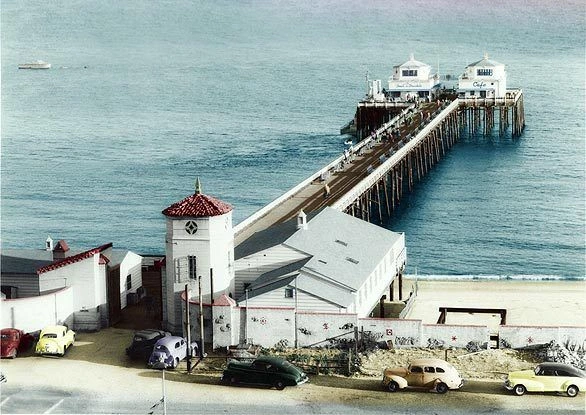
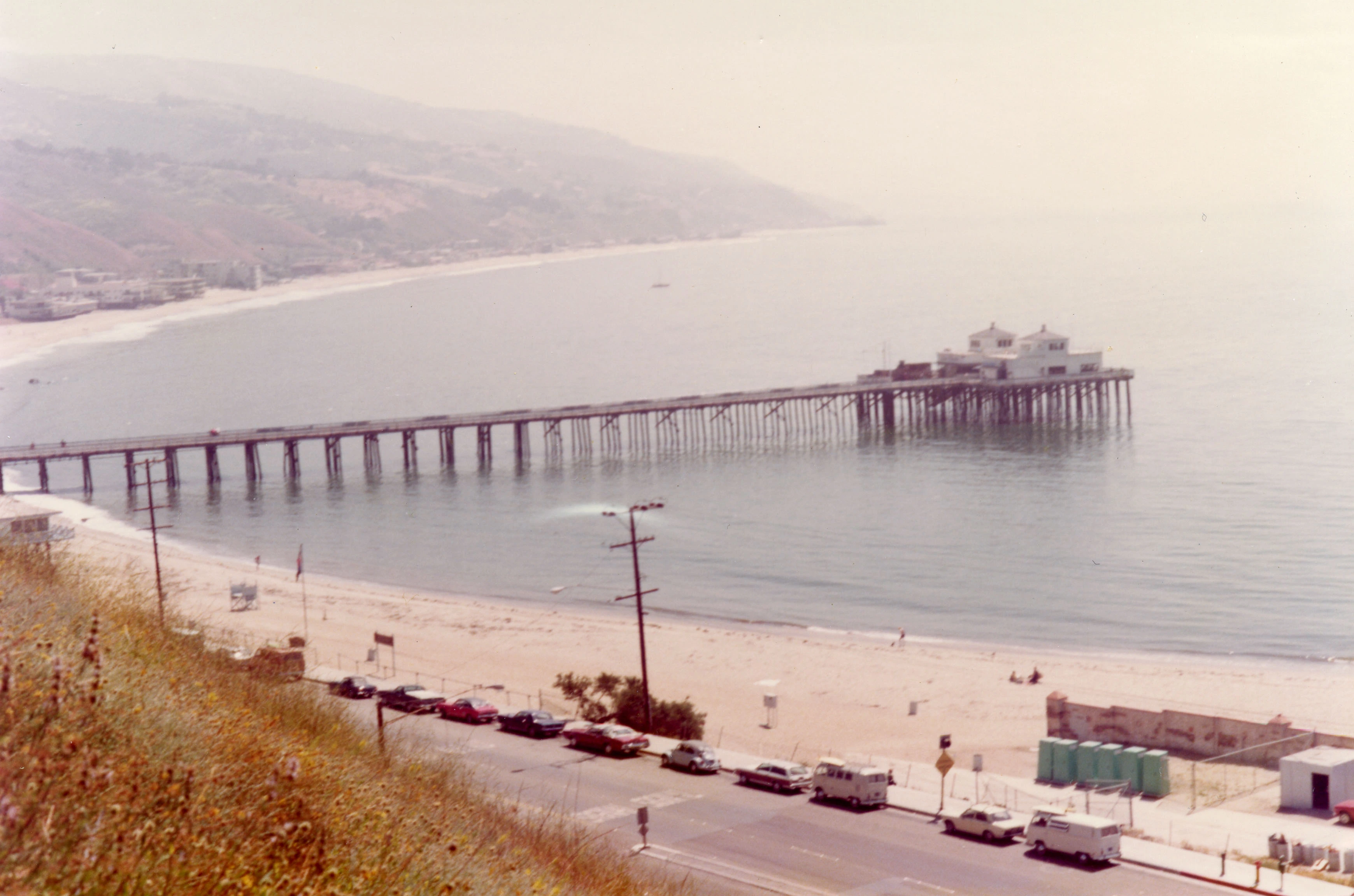
On February 10, 1980 a real estate auction was held in Malibu and the star property offered was the Malibu Pier, the first time Bill Huber put it up for sale. Bids of $3 million and $3.1 million were received but Huber did not sell at that time. Later that year, the State of California did buy the Pier, in somewhat battered condition. The Pier continued to operate under the State Department of Parks and Recreation, that leased space to the commercial operations on the Pier.
In 1985, the Los Angeles County Board of Supervisors voted unanimously to recommend the Pier for registration as a Point of Historical Interest. The historic pier was heavily damaged in the El Niño storms in 1993 and another storm severely damaged it again in 1995. It was declared unsafe and the State closed it to the public. In 1997, California transferred the Pier to the City of Malibu with the provision that Malibu fix and maintain it, something the City did not have the funds to do. The Pier reverted to the State. After restoration, the Pier reopened in 2008 and has again welcomed fishermen, movie stars and visitors from the around the world. On August 25, 2014, Hurricane Marie off the Baja Coast caused waves that crested just below the deck causing damage to many pilings as well as the landing.
History furnished by California State Parks.
%202.svg)
Surfing at the Malibu Pier
The Malibu Pier forms the eastern boundary of the worlds first surf reserve and has been witness to the sport from its earliest days practiced by a few trespassers who snuck in to Rancho Malibu to the days of Gidget trading sandwiches for surf lessons and on through the free styling of the 80's through to the revival of long boarding we see today.“
"Malibu is the exact spot on earth where ancient surfing became modern surfing" - Paul Gross
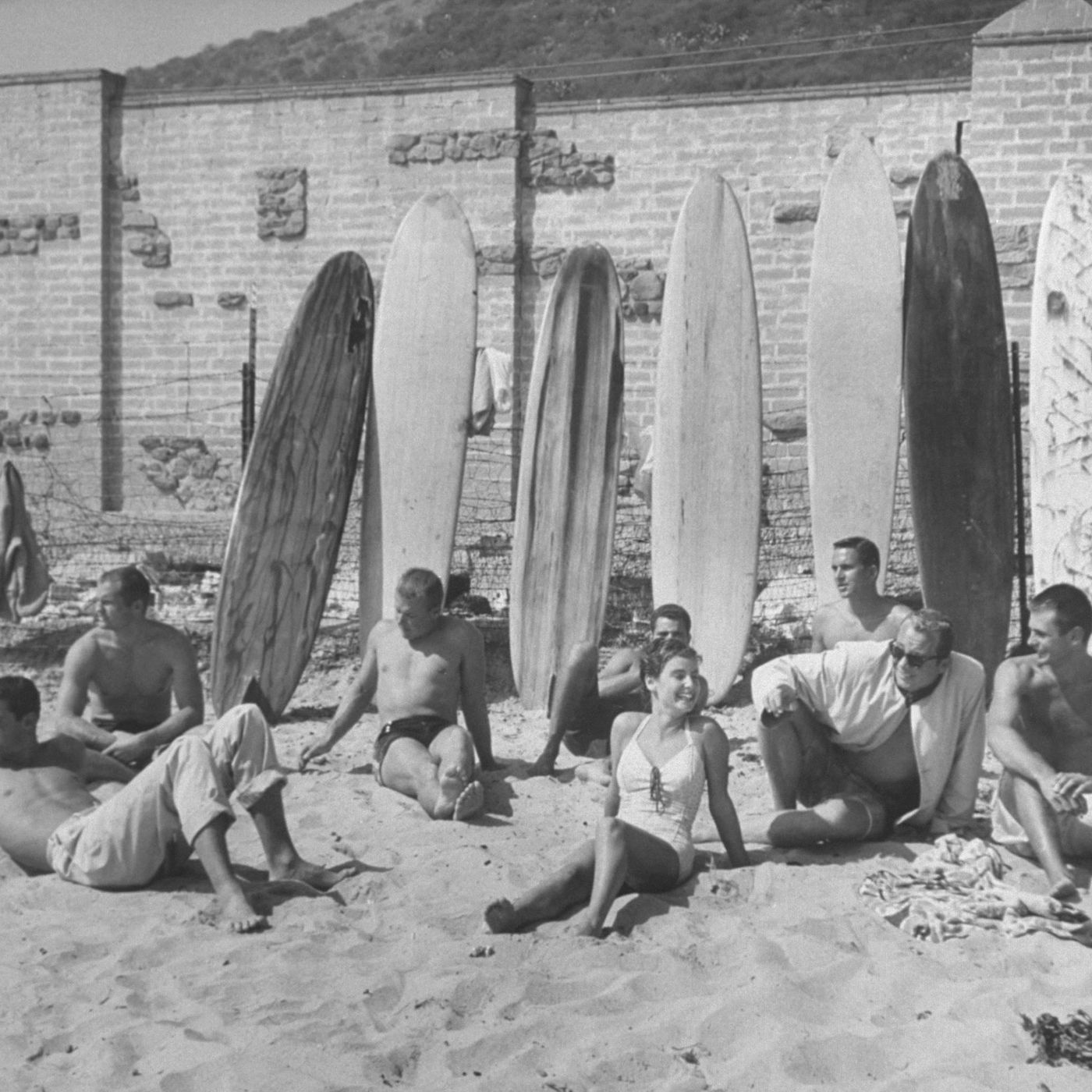
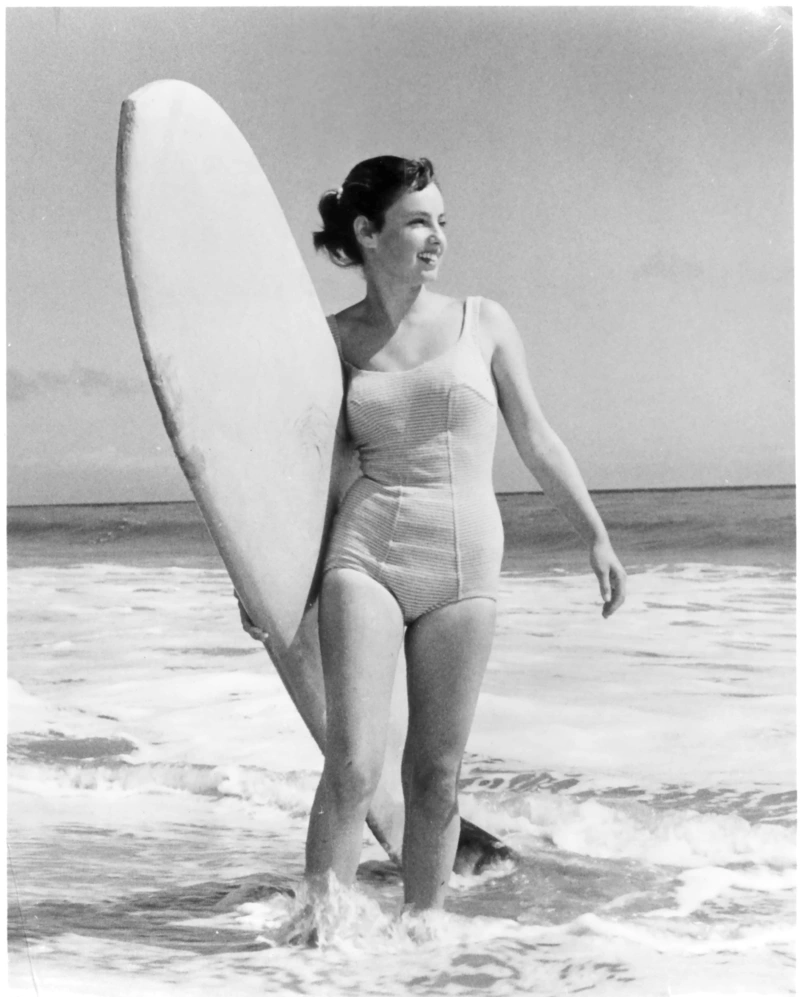
Gidget
Flashback to the summer of ’56. Elvis owned the airwaves, and 15 year old pixy, Kathy Kohner, wanted the boys at Malibu to teach her to surf. Trading peanut butter sandwiches for surf lessons, she earned the nickname Gidget (Girl + Midget) and quickly became a fixture at the beach. Her father, the accomplished screenwriter Fredrick Kohner, enthralled by the subculture of surfers, adapted her surfing exploits into the novel Gidget, the Girl Who Could. The book was a hit and quickly were followed by a series of blockbuster films and TV series starring a young Sally Field. More than just a coming of age story, Gidget was the spark that put surfing into the mainstream.
If you spot a spry grandmother with a flower in her hair walking on the pier... it just might be Gidget.
Miki Dora
He had many names, the Black Knight, Da Cat or the Prince of Malibu. Through the 50’s & 60’s he owned the wave at Malibu. A towering figure with catlike nimbleness walking on the surfboard, he was the epitome of the rebel surfer. Actors liked to hangout with him to learn his swagger and he charmed many a starlet. Notorious on the waves for challenging less experienced surfers who dare get on his wave, he was more cavalier performing as a surfing stunt double in beach blanket movies of the 60's.
As surfing became popular and his Malibu wave became crowded, Dora took off to surf the wild shores of South Africa and Namibia and avoid some legal issues back home. Miki left us early in 1993 most likely to surf the perfect, empty waves of paradise.
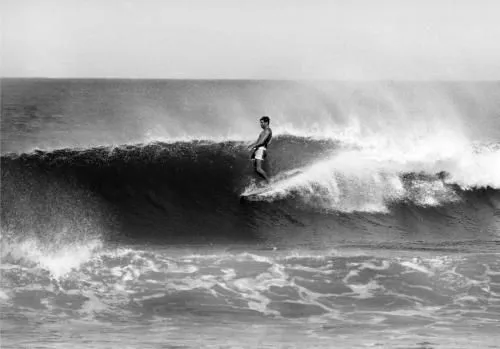
%202.svg)
Marie & Big Wednesday
In the cult classic surf film, Big Wednesday, the heroes of the film look forward to the perfect swell known as Big Wednesday. In August 2014, Hurricane Marie exploded to Cat 5 off the Baja coast and that sent it's massive tidal energy on a bulls-eye run towards Malibu. By the evening of Tuesday August 26, the waves at Malibu went epic.
As dawn broke on Wednesday, the greatest day of surfing in the history of Malibu unfolded as 20 foot swells crashed through. Big wave surfer and local Laird Hamilton began shooting the pier (riding between the pilings) to the thrill of the spectators except for taking a break to rescue a stranded surfer.
Other legends including Alan Sarlo, Andy Lyons & surf crooner Jack Johnson joined the action while most surfers watched from the safety of beach as boards broke and rescues were made. While the surfers got all the attention, our pier stood strong while the waves delivered punch after punch. In the end, 13 pilings were torn loose and our landing was smashed but what's a great day of surf without a few dings?

